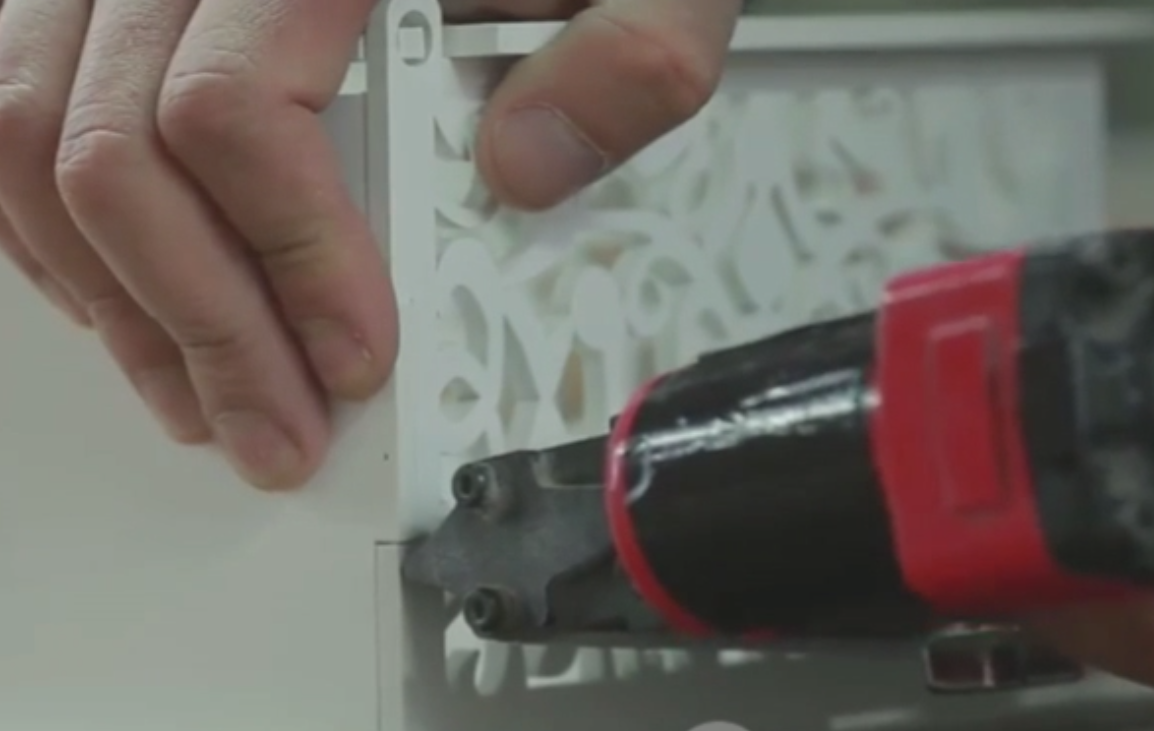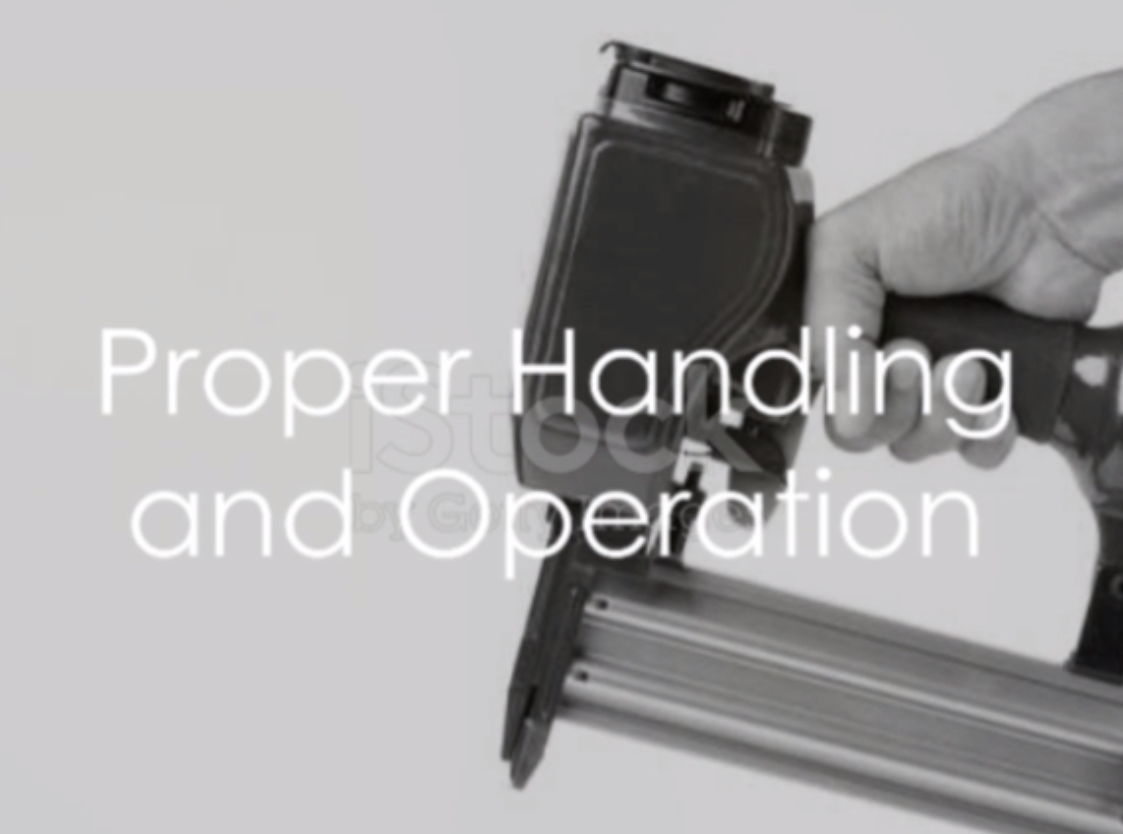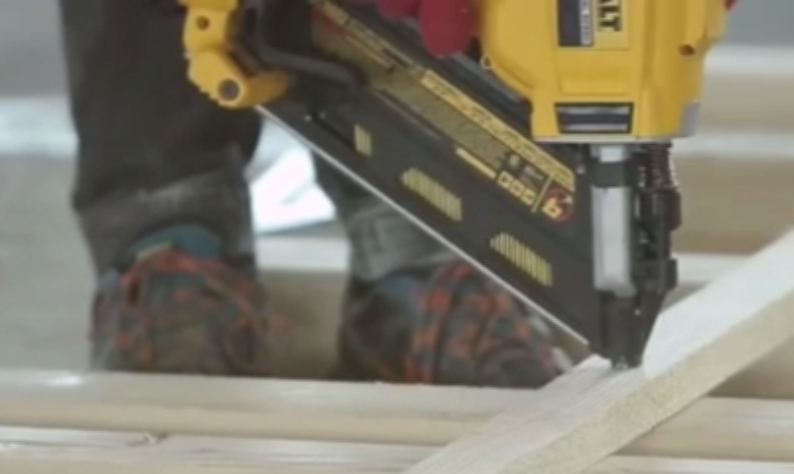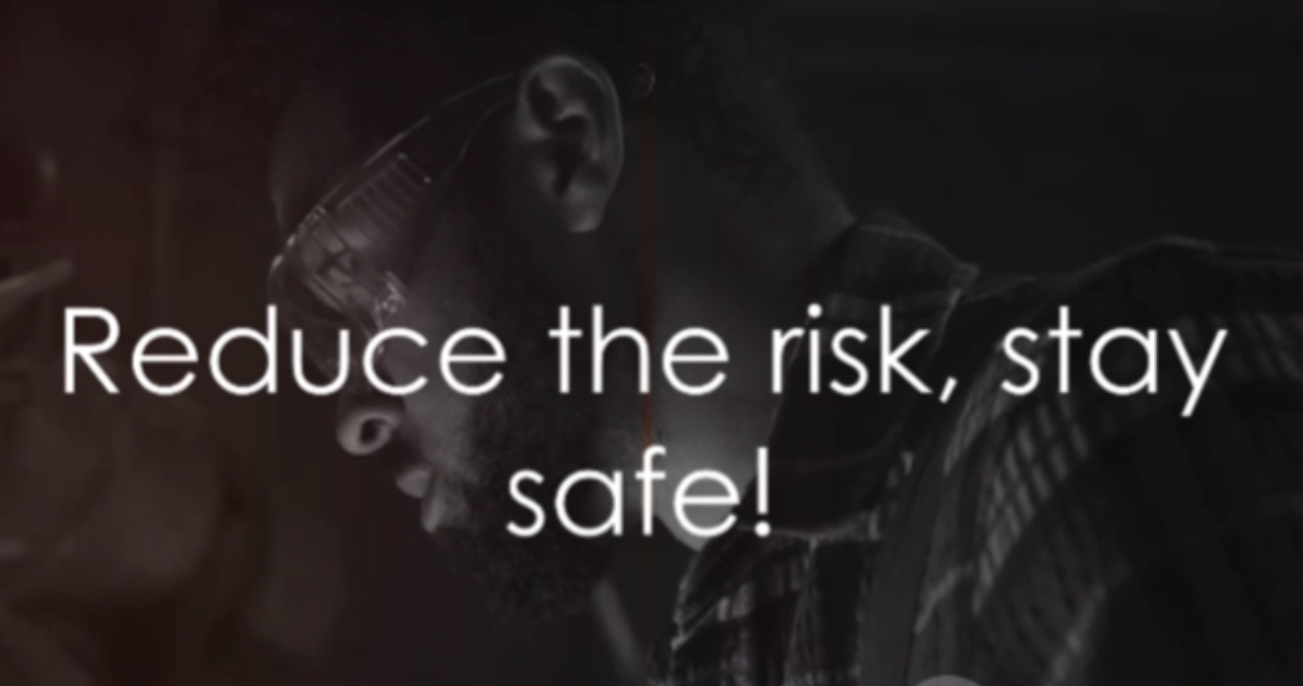Nail Gun Safety: Essential Tips for Safe Operation
After you've read up, Test Your Nail Gun Safety Knowledge with our Interactive Quiz.
Nail Gun Safety: Introduction and Importance

Welcome to our comprehensive guide on nail gun safety. Nail guns are indispensable tools in construction and woodworking projects, allowing for efficient and precise fastening of materials. However, improper use of nail guns can result in serious accidents and injuries, making it essential to prioritize safety at all times.
Understanding nail gun safety begins with recognizing the potential risks and hazards associated with their operation. From accidental firings to nail ricochets and puncture wounds, nail gun injuries can have severe consequences if proper precautions are not taken. By adhering to safety guidelines and best practices, you can significantly reduce the likelihood of accidents and protect yourself and others on the job site.
Throughout this article, we'll delve into the fundamentals of nail gun safety, covering everything from the different types of nail guns to essential safety tips and preventative measures. Whether you're a seasoned professional or a DIY enthusiast, mastering nail gun safety is paramount to ensure a safe and productive work environment.
Understanding Nail Gun Types and Operation

Before delving into nail gun safety tips, it's essential to understand the different types of nail guns available and how they operate. Nail guns come in various forms, including pneumatic, cordless, and electric models, each with its unique features and applications.
Pneumatic nail guns, powered by compressed air, are commonly used in construction and carpentry due to their reliability and power. Cordless nail guns, on the other hand, offer portability and convenience, making them ideal for remote job sites or DIY projects. Electric nail guns, powered by electricity, provide consistent performance and are suitable for lighter-duty tasks.
Regardless of the type of nail gun you're using, understanding how it works is crucial for safe operation. Nail guns typically consist of a trigger mechanism, magazine, and barrel, with nails fed into the barrel and expelled with each trigger pull. Familiarizing yourself with the components and operation of your nail gun is the first step towards safe and effective use.
In the next section, we'll explore essential nail gun safety tips to help you minimize the risk of accidents and injuries while using these powerful tools.
Essential Nail Gun Safety Tips

When it comes to nail gun safety, following proper guidelines and precautions is paramount to prevent accidents and injuries. Whether you're a professional contractor or a DIY enthusiast, incorporating these essential safety tips into your nail gun usage can help keep you and others safe on the job site:
- Wear appropriate personal protective equipment (PPE): Always wear safety glasses, hearing protection, and gloves when operating a nail gun to protect against flying debris and loud noise.
- Inspect the nail gun before use: Check for any damage, debris, or malfunctioning parts before using the nail gun. Ensure that it is properly lubricated and free from obstructions to prevent misfires and accidents.
- Keep your finger off the trigger: Only place your finger on the trigger when you are ready to fire the nail gun. Avoid resting your finger on the trigger when not nailing to prevent accidental discharges.
- Secure workpieces properly: Ensure that the material you are nailing is firmly secured in place before firing the nail gun. Use clamps or hold-downs to prevent the material from shifting or moving during nailing.
- Use the appropriate nail size and type: Select nails that are compatible with your nail gun and appropriate for the task at hand. Using the wrong size or type of nails can lead to jamming, misfires, or incomplete penetration.
By incorporating these safety tips into your nail gun usage, you can minimize the risk of accidents and injuries and ensure a safer work environment for yourself and others.
Preventing Nail Gun Accidents

Nail gun accidents can have serious consequences, ranging from minor injuries to life-threatening situations. To minimize the risk of accidents and ensure a safe work environment, it's essential to implement preventive measures and best practices when using nail guns. Here are some key tips to help prevent nail gun accidents:
- Practice proper handling and storage: Always carry the nail gun with the muzzle pointing away from your body and others. Store the nail gun in a secure location when not in use, away from children and unauthorized users.
- Know your nail gun's firing mode: Familiarize yourself with the different firing modes of your nail gun, such as sequential and bump firing. Use the appropriate mode for the task at hand and avoid unintentional firing by keeping your finger off the trigger when not nailing.
- Inspect the work area: Before nailing, inspect the work area for any potential hazards or obstructions. Remove debris, clutter, and tripping hazards to create a safe and unobstructed workspace.
- Keep hands and fingers away from the nail gun's muzzle: Never place your hands or fingers in front of the nail gun's muzzle or near the nailing point. Keep a safe distance from the nailing area to avoid accidental contact with the nail.
- Follow manufacturer's instructions: Always refer to the manufacturer's guidelines and operating instructions when using a nail gun. Follow recommended maintenance procedures and safety precautions to ensure proper operation and prevent accidents.
By implementing these preventive measures and adhering to safety protocols, you can significantly reduce the risk of nail gun accidents and create a safer work environment for yourself and others.
Recognizing and Responding to Nail Gun Injuries
While prevention is key, it's important to be prepared in case of nail gun injuries. Accidents can happen, and knowing how to recognize and respond to nail gun injuries promptly can make a significant difference. Here's a guide on recognizing and responding to common nail gun injuries:
- Puncture Wounds: If someone sustains a puncture wound from a nail gun, assess the severity of the injury. For minor punctures, clean the wound with mild soap and water, apply an antiseptic, and cover it with a sterile bandage. Seek medical attention for deeper or more severe puncture wounds.
- Nail Embedment: In cases where a nail is embedded in the skin, do not attempt to remove it. Stabilize the object and seek immediate medical attention. Removing embedded nails without professional assistance can cause further harm.
- Bleeding: Apply direct pressure to control bleeding from nail gun injuries. Elevate the injured area if possible. If bleeding is severe, call for emergency medical assistance.
- Shock: Nail gun injuries can be traumatic, and individuals may go into shock. Keep the injured person calm, help them lie down, and cover them with a blanket. Call for emergency medical assistance.
It's crucial to remember that nail gun injuries require prompt and professional medical attention. Even seemingly minor injuries can have complications, so seeking medical help is essential.
Training and Certification for Nail Gun Users
Proper training and certification are essential for nail gun users to ensure safe and effective operation. Whether you're a professional contractor or a DIY enthusiast, receiving adequate training on nail gun usage can help prevent accidents and injuries on the job site. Here's what you need to know about training and certification for nail gun users:
Importance of training: Nail guns are powerful tools that require skill and expertise to use safely. Training programs cover topics such as proper handling, operation techniques, safety precautions, and emergency procedures. By undergoing comprehensive training, nail gun users can develop the knowledge and skills necessary to operate the tool safely and minimize the risk of accidents.
Certification programs: Many organizations offer certification programs specifically designed for nail gun users. These programs typically include hands-on training, written exams, and practical assessments to ensure proficiency in nail gun operation and safety. Upon successful completion of the certification program, participants receive a certificate or credential indicating their competence in nail gun usage.
Resources and training materials: In addition to formal certification programs, there are various resources and training materials available to nail gun users. These include online courses, instructional videos, and safety guides provided by manufacturers, industry associations, and government agencies. Utilizing these resources can supplement formal training and enhance knowledge of nail gun safety practices.
Continuous education and updates: Nail gun technology and safety standards evolve over time, requiring users to stay informed and up-to-date on best practices. Participating in continuing education programs and staying informed about industry developments can help nail gun users maintain their skills and adapt to changes in technology and regulations.
By prioritizing training and certification, nail gun users can enhance their safety awareness, improve their proficiency in nail gun operation, and contribute to a safer work environment for themselves and their colleagues.
Conclusion: Prioritizing Nail Gun Safety
Nail guns are powerful tools that have revolutionized construction and woodworking projects, but they also pose significant risks if not used properly. Throughout this guide, we've emphasized the importance of nail gun safety and provided valuable tips and insights to help you minimize the risk of accidents and injuries.
As you continue to use nail guns in your projects, remember to prioritize safety at all times. Whether you're a seasoned professional or a DIY enthusiast, following proper guidelines and precautions can help protect yourself and others on the job site. From wearing appropriate personal protective equipment to receiving proper training and certification, every step you take towards safety contributes to a safer work environment.
Nail gun accidents and injuries are preventable, and it's up to each of us to take responsibility for our safety and the safety of those around us. By incorporating the safety tips and best practices outlined in this guide into your nail gun usage, you can reduce the likelihood of accidents and create a workplace that prioritizes safety above all else.
Thank you for taking the time to learn about nail gun safety. Together, we can build a safer and more secure future for everyone.
Expert Quotes on Nail Gun Safety
"Understanding how to use nail guns safely is crucial for preventing serious injuries on the job site. Always follow manufacturer instructions and prioritize safety measures."
John Smith, Construction Safety Expert
"Nail gun accidents can have severe consequences, but with proper training and precautions, they can be prevented. Safety should always be the top priority."
Sarah Johnson, Occupational Health Specialist
Infographic: Nail Gun Safety Tips
Wear appropriate personal protective equipment (PPE), including safety glasses and gloves.
Inspect the nail gun before use to ensure it's in proper working condition.
Keep your finger off the trigger until you're ready to fire the nail gun.
Secure workpieces properly to prevent movement during nailing.
Use the appropriate nail size and type for the task at hand.
Interactive Quiz: Test Your Nail Gun Safety Knowledge
What is the recommended personal protective equipment (PPE) for using a nail gun?
- Safety goggles and gloves
- Earplugs and a hard hat
- Face shield and steel-toed boots
When should you keep your finger on the trigger of a nail gun?
- At all times to be ready for action
- Only when you're about to fire a nail
- Whenever you're holding the nail gun
What should you do if you encounter a jammed nail gun?
- Attempt to clear the jam yourself
- Ask a coworker for help
- Stop using the nail gun and notify your supervisor
How should you store a nail gun when not in use?
- Leave it on the workbench for easy access
- Store it in a locked cabinet or case
- Hang it on a nail on the wall
What is the recommended approach if you accidentally fire a nail gun?
- Laugh it off and continue working
- Inspect the area for damage and report it if necessary
- Ignore it and hope no one notices
External Resources for Nail Gun Safety
Our Nail Gun Safety Video Recap
In this must-watch video, we dive into the world of nail guns and why it's crucial to prioritize safety on the job site. Accidents and injuries can happen in an instant, but by implementing essential safety guidelines, we can prevent them. Join us as we explore the best practices for using nail guns, understand the potential risks involved, and discover how to protect yourself and others while working. Whether you're a seasoned pro or just starting out, this video is packed with valuable information that everyone needs to know. So, grab a seat and get ready to learn! Don't forget to like and share this video to spread the message of safety in the construction industry. Together, let's build a safer workplace for all.
Scroll to the top of the page to watch the video!
- 00:00:00 Cold Open
- 00:00:16 Title Screen
- 00:00:20 Introduction
- 00:00:39 Personal Protective Equipment (PPE)
- 00:00:53 Proper Handling and Operation
- 00:01:08 Worksite Preparation
- 00:01:19 Emergency Procedures
- 00:01:32 Conclusion
- 00:01:52 Call to Action
- 00:02:08 End Screen
